#emile kuri
Text
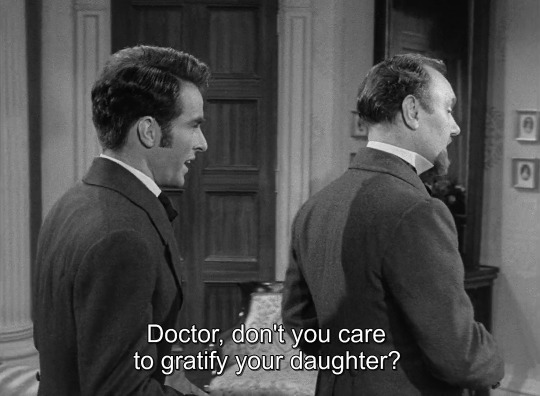
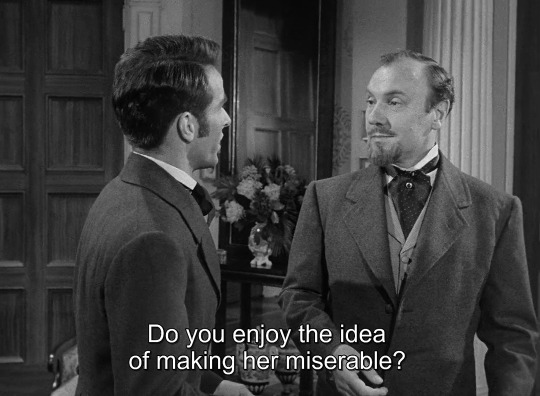

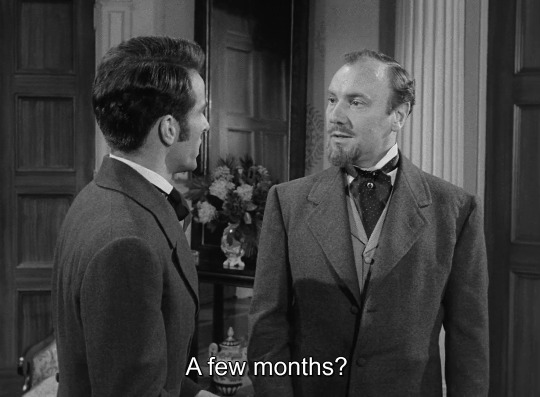
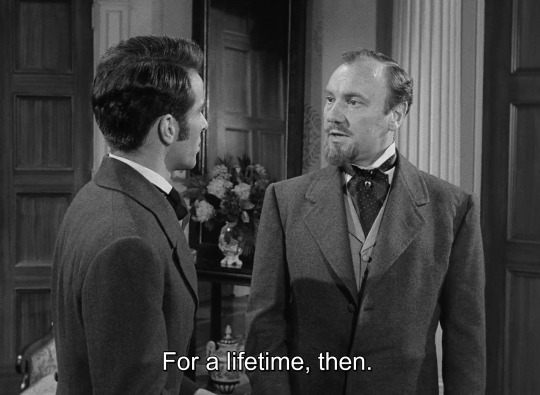
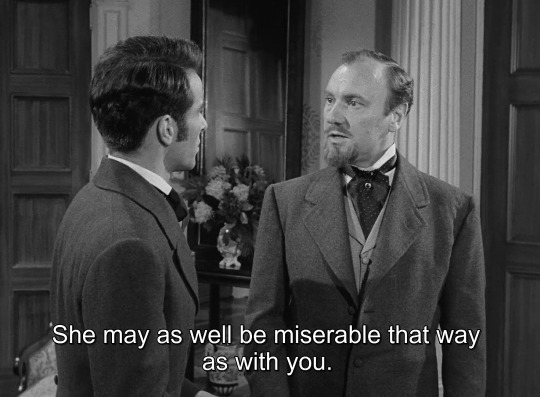





The Heiress (William Wyler, 1949).
#the heiress (1949)#the heiress#william wyler#henry james#montgomery clift#ralph richardson#leo tover#william hornbeck#harry horner#edith head#emile kuri#john meehan
30 notes
·
View notes
Text








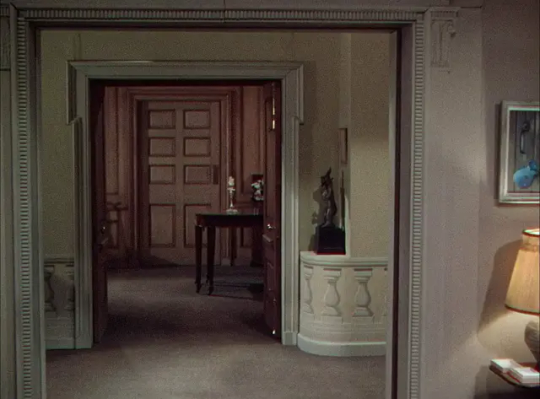
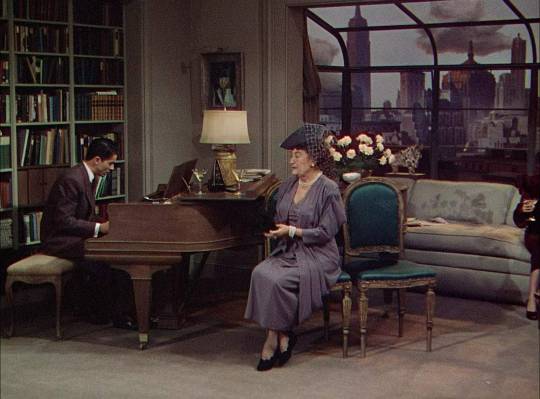



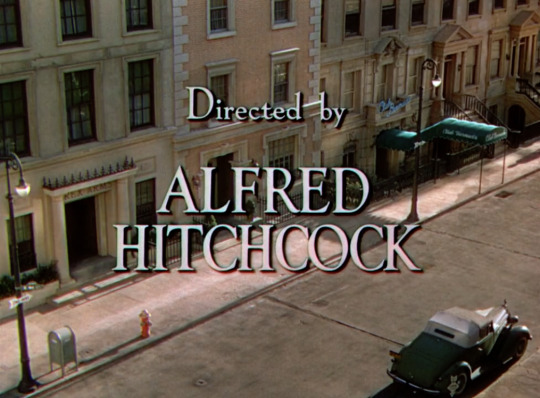
Rope | 1948 | USA
Director: Alfred Hitchcock
Set decorator: Howard Bristol and Emile Kuri
#rope#james stewart#john dall#farley granger#alfred hitchcock#production design#set design#interior design#interior and films#architecture#films#film frames#classicfilmsource#cinema#cinematography#1940s movies#1940s
433 notes
·
View notes
Photo
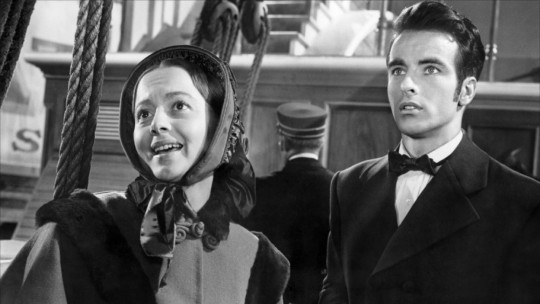
Olivia de Havilland and Montgomery Clift in The Heiress (William Wyler, 1949)
Cast: Olivia de Havilland, Montgomery Clift, Ralph Richardson, Miriam Hopkins, Vanessa Brown, Betty Linley, Ray Collins, Mona Freeman, Selena Royle, Paul Lees, Harry Antrim, Russ Conway, David Thursby. Screenplay: Ruth Goetz, Augustus Goetz, based on their play suggested by a novella by Henry James. Cinematography: Leo Tover. Production design: Harry Horner. Film editing: William Hornbeck. Music: Aaron Copland.
With 12 Oscar nominations and three wins for directing, William Wyler holds a firm place in the history of American movies. But not without some grumbling on the part of auteur critics like Andrew Sarris, who observed, "Wyler's career is a cipher as far as personal direction is concerned." His movies were invariably polished and professionally made, but if what you're looking for is some hint of personality behind the camera, the kind that Alfred Hitchcock or Howard Hawks or John Ford displayed no matter what the subject matter of the film, then Wyler is an enigma. His most personal film, The Best Years of Our Lives (1946), grew out of his wartime experiences, but they are subsumed in the stories he has to tell and not revealed with any assertively personal point of view on them. And anyone who can trace a Wylerian personality latent in movies as varied as Mrs. Miniver (1942), Roman Holiday (1953), Ben-Hur (1959), and Funny Girl (1968) has a subtler analytical mind than mine. What they have in common is that they are well made, the work of a fine craftsman if not an artist. The other thing they have in common is that they won Oscars for their stars: Greer Garson, Audrey Hepburn, Charlton Heston, and Barbra Streisand, respectively. The Heiress, too, won an Oscar for its star, Olivia de Havilland, suggesting that in Wyler we have a director whose virtue lay not in his personal vision but in his skill at packaging, at arranging a showcase not just for performers -- he also directed Oscar-winning performances by Bette Davis in Jezebel (1938) and by Fredric March and Harold Russell in The Best Years of Our Lives -- but also for production designers, costume designers, composers, and cinematographers: Oscars for The Heiress went to John Meehan, Harry Horner, and Emile Kuri for art direction and set decoration, to Edith Head and Gile Steele for costumes, and to Aaron Copland for the score, and Leo Tover was nominated for his cinematography. Wyler lost the directing Oscar to Joseph L. Mankiewicz for A Letter to Three Wives, but is there any doubt that The Heiress would have been a lesser film than it is without Wyler's guidance? All of this is a long-winded way to say that although I honor, and in many ways prefer, the personal vision that shines through in the works of directors like Hitchcock, Hawks, Ford, et al., there is room in my pantheon for the skilled if impersonal professional. As for The Heiress itself, it's a satisfying film with two great performances (de Havilland's Catherine and Ralph Richardson's Dr. Sloper), one hugely entertaining one (Miriam Hopkins's Lavinia Penniman), and one sad miscasting: Montgomery Clift's Morris Townsend. It's a hard role to put across: Morris has to be plausible enough to persuade not only Catherine but also the somewhat more worldly Lavinia that he is genuinely in love with Catherine and not just her money, but he also needs to give the audience a whiff of the cad. Clift's Morris is too callow, too grinningly eager. There is no ambiguity in the performance. If we like Morris too much, we risk seeing Dr. Sloper more as an over-stern paterfamilias and less as the cruelly self-absorbed man he is. Richardson's fine performance goes a long way to righting this imbalance, but he's fighting Clift's sex appeal all the way.
8 notes
·
View notes
Photo

As Disneyland was constructed, Walt Disney wanted a place to stay and watch the activity. So, he had a special apartment constructed on the second floor of the Main Street Firehouse. Private, and hidden from the rest of Disneyland, it was the perfect place for Walt to do quiet work, or enjoy with his family. The apartment is was very small, but was fully operational. It had a small bathroom, with a shower, along with a small kitchen unit. The furniture design was in a “Firehouse” look, with reds, and whites, decorating the room. The original decorator of the apartment was Emil Kuri, a set designer for many Disney films, and also the decorator of Main Street, itself. Walt didn’t allow any pictures of him or his family inside the apartment. Except photograph, for National Geographic Magazine this photo is from the series #waltdisney #disneylandsecrets #mainstreetusa #disney #disneyland #disneylandcalifornia (at Disneyland - Theme Park) https://www.instagram.com/p/BwxaJ10H2Hn/?utm_source=ig_tumblr_share&igshid=1faqm83e8as64
19 notes
·
View notes
Text
2022 RIBA London Awards Winners
2022 RIBA London Awards shortlist, Winning Buildings, British Capital Architecture, Projects Links
2022 RIBA London Awards Winners, UK
24 May 2022
2022 RIBA London Building of the Year announced
photo © Rory Gardiner
2022 RIBA London Awards Winners News
Sands End Arts and Community Centre by Mæ Architects has been announced as the 2022 Royal Institute of British Architects (RIBA) London Building of the Year.
Located on the northwest corner of Fulham’s South Park, the new Sands End Arts and Community Centre is a collaborative development comprising several new pavilions built with a sustainably sourced CLT frame. As part of the same project Clancarty Lodge, a popular landmark, was refurbished as an exhibition space. Driven by the local council’s arts strategy of improving access to cultural activities for the widely diverse local community, the development’s brief and programme were co-created in consultation with the council, user clients, local stakeholders and local residents, all facilitated by the architects. The result is a flexible new facility at the gateway into the park.
RIBA President, Simon Allford said:
“Winning a regional Building of the Year Award is a major achievement. Across the country projects have been selected for this accolade because they are exemplars of the very best of innovative, intelligent and delightful design. The results of positive collaboration between architect and client, and design team and contractor, they demonstrate that high quality, sustainable architecture can positively impact the lives of the people that engage with it. My warmest congratulations to all those involved.”
The RIBA Regional Building of the Year Awards were presented at a ceremony at the RIBA’s Headquarters in London on Tuesday evening.
Sands End Arts and Community Centre, by Mæ Architects
Sands End Arts and Community Centre is one of 42 projects which received a 2022 RIBA London Award, announced earlier this month.
The 2022 RIBA London Award winners were:
100 Bishopsgate by Allies and Morrison with Arney Fender Katsalidis
100 Liverpool Street by Hopkins Architects
198 CAL by CarverHaggard
245 Hammersmith Road by Sheppard Robson
Artist’s Studio in Stepney by Martin Edwards Architects
Barts Square by Sheppard Robson with Maccreanor Lavington and Piercy&Company
Belle Vue by Morris+Company with Architecture PLB
BFI Riverfront by Carmody Groarke
Breakers Place, Nottingdale by Allford Hall Monaghan Morris
Cromwell Place by BuckleyGrayYeoman
Ditton Hill House by Surman Weston
Hackney New Primary School and 333 Kingsland Road by Henley Halebrown
Hackney School of Food by Surman Weston
Harris Academy Sutton by Architype
Hawley Wharf by Allford Hall Monaghan Morris
House in Primrose Hill by Jamie Fobert Architects
Hoxton Southwark by Lifschutz Davidson Sandilands
Ibstock Place School Refectory by Maccreanor Lavington
Kiln Place by Peter Barber Architects
Lambeth Palace Library by Wright & Wright Architects
LB Southwark SILS3 by Tim Ronalds Architects
Leyton House by McMahon Architecture
Mews House by creativemass
Mews House Deep Retrofit by Prewett Bizley Architects
Mountain View by CAN
NoMad London by EPR Architects
Orchard Gardens, Elephant Park by Panter Hudspith Architects
Peveril Gardens and Studios by Sanchez Benton Architects with Gabriel Kuri and Nigel Dunnett
Pitched Black by Gruff Architects
Plumstead Centre by Hawkins\Brown
Royal Wharf Primary School by Feilden Clegg Bradley Studios
Sands End Arts and Community Centre by Mæ Architects
Sideways House by Leep Architects
Sir Michael Uren Hub by Allies and Morrison
St John’s Church, Hackney by Thomas Ford & Partners with John Pawson
St John’s Street by Emil Eve Architects
The Post Building by Allford Hall Monaghan Morris
The Library House by Macdonald Wright Architects
Tree House Ealing by Fletcher Crane Architects
Victoria House Bloomsbury by Hutchinson & Partners and LABS Design
Woods Quay by Architecturall with Bere Architects
Yorkton Workshop by Cassion Castle Architects with Pearson Lloyd
All RIBA London Award winners will now be considered for a highly-coveted RIBA National Award in recognition of their architectural excellence, which will be announced in June. The shortlist for the RIBA Stirling Prize for the best building of the year will be drawn from the RIBA National Award-winning projects later in the year.
Previously on e-architect:
28 Feb 2022
68 projects shortlisted for the 2022 RIBA London architecture awards
Royal Institute of British Architects – British Prize Shortlist: Buildings + Architects News
Monday 28th of February 2022 – 68 projects have been shortlisted for 2022 RIBA (Royal Institute of British Architects) London Awards.
Principal Tower building design by Foster + Partners:
photograph © Nigel Young
2022 RIBA London Awards shortlist News
The projects that have been shortlisted are:
• 100 Bishopsgate, Allies and Morrison
• 100 Liverpool Street, Hopkins Architects
• 135 Bishopsgate, Fletcher Priest Architects
• 198 CAL, CarverHaggard
• 245 Hammersmith Road, by Sheppard Robson
• 80 Percent House – Deep Retrofit in a Conservation Area, by Prewett Bizley Architects
• Albion Drive E8, by Theme2 Architects
• Artist’s Studio in Stepney, Martin Edwards Architects
• Barts Square, by Sheppard Robson
• Belgravia Gate, by Flanagan Lawrence Ltd
• Belle Vue, by Morris+Company
• BFI Riverfront, Carmody Groarke
• Breakers Place, Nottingdale, by Allford Hall Monaghan Morris
• Brickfields, by Witherford Watson Mann Architects
• Bunhill 2 Energy Centre, by Cullinan Studio
• City Law School, by WilkinsonEyre
• Cromwell Place, by Buckley Gray Yeoman
• Dept W, Buckley Gray Yeoman
• Ditton Hill House, Surman Weston
• Duckworth Terrace, Peter Barber Architects
• Forest Gate Community School, by Rivington Street Studio
• Hackney New Primary School and 333 Kingsland Road, by Henley Halebrown
• Hackney School of Food, by Surman Weston
• Harris Academy, Sutton, Architype
• Harrow Square, by Skidmore, Owings & Merrill (Europe)
• Hawley Wharf, by Allford Hall Monaghan Morris
• House in Primrose Hill, by Jamie Fobert Architects Limited
• Hoxton Southwark, Lifschutz Davidson Sandilands
• Ibstock Place School Refectory, Maccreanor Lavington
• Kiln Place, by Peter Barber Architects
• Lambeth Palace Library, Wright & Wright Architects
• LB Southwark SILS3, Tim Ronalds Architects
• Leyton House, by McMahon Architecture
• Mews House Deep Retrofit, by Prewett Bizley Architects
• Mews House, by creativemass
• Mountain View, CAN
• NoMad London, by EPR Architects
• Orchard Gardens, Elephant Park, Panter Hudspith Architects
• Peveril Gardens and Studios, Sanchez Benton Architects
• Pinnacle House, Royal Wharf, Mae Architects
• Pitched Black, Gruff Architects
• Plumstead Centre, Hawkins\Brown
• Principal Tower, Foster + Partners
• Ram Quarter Phase One, EPR Architects
• Royal Wharf Primary School, Feilden Clegg Bradley Studios
• Sands End Arts and Community Centre, by Mæ Architects
• Sideways House, by Leep Architects
• Sir Michael Uren Hub, by Allies and Morrison
• Smithson Tower _ The Economist Building, by ConForm Architects
• Southwark Brick House, Satish Jassal Architects
• St John Street, by Emil Eve Architects
• St John’s Church, Hackney, by Thomas Ford & Partners
• St Mary’s Centre, by Erect Architecture
• Stephen Hawking School, by Donald McCrory
• Studio House, by AOC Architecture Ltd
• The Archives, by ROAR Architects
• The Interlock, by Bureau de Change Architects
• The Library House, by Macdonald Wright Architects
• The Lodge, Simon Gill Architects
• The Mews House, Bouverie Mews, by Spatial Affairs Bureau
• The Post Building, by Allford Hall Monaghan Morris
• Totteridge House, by Gregory Phillips Architects
• Toynbee Hall Estate and London Square Spitalfields, Platform 5 Architects
• Tree House, Ealing, by Fletcher Crane Architects
• Victoria House, Bloomsbury , by Hutchinson & Partners
• Wimbledon House, Allford Hall Monaghan Morris
• Woods Quay, by Architecturall ltd
• Yorkton Workshops, by Cassion Castle Architects
Principal Tower design by Foster + Partners:
photograph © Nigel Young
RIBA London Director Dian Small, welcomed the news:
“Despite the challenges of the past two years, we are delighted that the shortlist includes a wide variety of buildings – all are a true testament to the high standard of architecture that London has to offer.
The jury discussions were focused on assessing how environmentally and socially consciousness the projects were – and particularly how they have and will positively shape the communities they are in.”
2022 RIBA London Awards shortlist – South East
100 Bishopsgate design by Allies and Morrison:
photograph © Jason Hawkes
100 Liverpool Street design by Hopkins Architects:
photograph © Charles Hosea
135 Bishopsgate design by Fletcher Priest Architects:
photograph © Jack Hobhouse
Artist’s Studio in Stepney:
photograph © Simon Carruthers
Dept W:
photograph © Matt Chisnall
Duckworth Terrace:
photograph © Morley von Sternberg
LB Southwark SILS3:
photograph © Jim Stephenson
Pinnacle House, Royal Wharf:
photograph © Rory Gardiner
Pitched Black House:
photograph © French+Tye
Plumstead Centre:
photograph © Jack Hobhouse
Royal Wharf Primary School:
photograph © Jim Stephenson
Southwark Brick House:
photograph © Richard Chivers
Toynbee Hall Estate and London Square Spitalfields:
photograph © Alan Williams
2022 RIBA London Awards shortlist – South West
198 CAL by CarverHaggard:
photograph © Francesco Russo
BFI Riverfront by Carmody Groarke:
photograph © Carmody Groarke
Ditton Hill House by Surman Weston:
photograph © Johan Dehlin
Harris Academy, Sutton, by Architype:
photograph © Jack Hobhouse
Hoxton Southwark by Lifschutz Davidson Sandilands:
photograph © Paul Riddle
Ibstock Place School Refectory by Maccreanor Lavington:
photograph © Jack Hobhouse
Lambeth Palace Library Building by Wright & Wright Architects:
photograph © Hufton+Crow
Mountain View
photograph © Jim Stephenson
Orchard Gardens, Elephant Park, Panter Hudspith Architects
photograph © Timothy Soar
Peveril Gardens and Studios by Sanchez Benton Architects:
photograph © Oskar Proctor
Ram Quarter Phase One EPR Architects:
photograph © Simon Kennedy
The Lodge, Simon Gill Architects:
photograph © James Brittain
Wimbledon House, Allford Hall Monaghan Morris:
photograph © Timothy Soar
2022 RIBA London Awards shortlist – North
Barts Square by Sheppard Robson:
photograph © Alex Upton
Belle Vue by Morris+Company:
photograph © Jack Hobhouse
Bunhill 2 Energy Centre by Cullinan Studio:
photograph © Paul Raftery
City Law School by WilkinsonEyre:
photograph © Nick Hufton
Kiln Place by Peter Barber Architects:
photograph © Morley von Sternberg
St John Street by Emil Eve Architects:
photograph © Mariell Lind Hansen
Studio House, by AOC Architecture Ltd
photograph © Anna Stathaki
The Archives by ROAR Architects:
photograph © Ollie Hammick
The Mews House, Bouverie Mews by Spatial Affairs Bureau:
photograph © Peter Culley
Totteridge House by Gregory Phillips Architects:
photograph © Andrew Beasley
2022 RIBA London Awards shortlist – East
80 Percent House – Deep Retrofit in a Conservation Area, by Prewett Bizley Architects
photograph © Kilian O’Sullivan
Albion Drive E8, by Theme2 Architects
photograph © Francis Sumner
Brickfields, by Witherford Watson Mann Architects
photograph © David Grandorge
Forest Gate Community School, by Rivington Street Studio
photograph © Simon Kennedy
Hackney New Primary School and 333 Kingsland Road, by Henley Halebrown
photograph © Nick Kane
Hackney School of Food, by Surman Weston
photograph © Jim Stephenson
Leyton House, by McMahon Architecture
photograph © Fernando Manoso
Sideways House, by Leep Architects
photograph © Mark Anthony Fox
St John’s Church, Hackney, by Thomas Ford & Partners
photograph © Gilbert McCarragher
St Mary’s Centre, by Erect Architecture
photograph © David Grandorge
Stephen Hawking School, by Donald McCrory
photograph © Tim Crocker
The Library House, by Macdonald Wright Architects
photograph © Heiko Prigge
Yorkton Workshops, by Cassion Castle Architects
photograph © Taran Wilkhu
2022 RIBA London Awards shortlist – West
245 Hammersmith Road, by Sheppard Robson
photo © Jack Hobhouse
Belgravia Gate, by Flanagan Lawrence Ltd
photo © Hufton + Crow
Breakers Place, Nottingdale, by Allford Hall Monaghan Morris
photo © Timothy Soar
Cromwell Place, by Buckley Gray Yeoman
photo © Julian Cornish-Trestrail
Harrow Square, by Skidmore, Owings & Merrill (Europe)
photo © Dave Burke
Hawley Wharf, by Allford Hall Monaghan Morris
photo © Timothy Soar
House in Primrose Hill, by Jamie Fobert Architects Limited
photo © Jim Stephenson
Mews House, by creativemass
photo © David Butler
Mews House Deep Retrofit, by Prewett Bizley Architects
photo © Tom Graham
NoMad London Hotel, by EPR Architects
photo © Simon Upton
Sands End Arts and Community Centre, by Mæ Architects
photo © Rory Gardiner
Sir Michael Uren Hub, by Allies and Morrison
photo © James Newton
Smithson Tower _ The Economist Building, by ConForm Architects
photo © Lorenzo Zandri
The Interlock, by Bureau de Change Architects
photo © Gilbert McCarragher
The Post Building, by Allford Hall Monaghan Morris
photo © Timothy Soar
Tree House, Ealing, by Fletcher Crane Architects
photo © Lorenzo Zandri
Victoria House, Bloomsbury, by Hutchinson & Partners
photo © Ståle Eriksen
Woods Quay, by Architecturall ltd
photo © Dan Glasser
All shortlisted projects will be assessed by a regional jury, and the winning projects will be announced later this Spring.
Regional Award winners are considered for several RIBA Special Awards including the RIBA Sustainability Award sponsored by Michelmersh and the RIBA Building of the Year sponsored by Taylor Maxwell.
Regional Award winners will be considered for a highly coveted RIBA National Award in recognition of their architectural excellence, the results of which will be announced in the summer.
The shortlist for the RIBA Stirling Prize for the best building of the year will then be drawn from the RIBA National Award-winning projects, and the Stirling Prize winner will be announced in October
RIBA London Awards Shortlist 2022 images / information received 280222
Previously on e-architect:
RIBA London Awards Shortlist 2018 News
RIBA London Awards 2018 Shortlisted Buildings
photo © Will Pryce
RIBA London Awards Shortlist 2018
RIBA London Awards 2017
Location: London, south east England, UK
London Architecture
London Architecture Links – chronological list
Houses of Parliament Restoration and Renewal Programme
photograph © UK Parliament
Houses of Parliament Restoration and Renewal
NoMad London, 4 Bow St, Covent Garden, WC2E 7AT
Design: Roman and Williams
photograph : Simon Upton
NoMad London Hotel, Covent Garden
English Architecture Designs – chronological list
RIBA Awards Past Winners
RIBA Awards Winning Buildings + Architects
RIBA Awards 2016
Stirling Prize
RIBA International Awards : Winners
RIBA Special Awards
RIBA Royal Gold Medal
Comments / photos for the 2022 RIBA London Awards shortlist page welcome
The post 2022 RIBA London Awards Winners appeared first on e-architect.
1 note
·
View note
Text

Hayley Mills in The Parent Trap (1961). The set decorators were Hal Gausman and Emile Kuri. Hal was born in Los Angeles and had 114 set decorator credits, from three episodes of Dragnet (1952) to 12 episodes of Falcon Crest (1987-88). His other notable credits include 78 episodes of Zorro, four episodes of Alfred Hitchcock Presents, The Absent Minded Professor, Big Red, Savage Sam, Son of Flubber, Mary Poppins, five episodes of Gilligan's Island, That Darn Cat, The Gnome Mobile, The Love Bug, The Computer Wore Tennis Shoes, Bedknobs and Broomsticks, The Great Northfield Minnesota Raid, The World's Greatest Athlete, Herbie Rides Again, Escape to Witch Mountain, MacArthur, Animal House, Same Time Next Year, The Blues Brothers, Back to the Future, The Untouchables, Jaws: The Revenge, an episode of Magnum PI and two episodes of Murder She Wrote.
Emile was born in Cuernavaca, Mexico, and had 132 set decorator credits, from 1938 to 1972. Emile has two Oscars, for his work on The Heiress, and 20000 Leagues Under the Sea (his first work with Disney). Much of his work was with Walt Disney, but he also worked on It Happened Tomorrow, It's a Wonderful Life, The Paradine Case, I Remember Mama, State of the Union, Rope, Dark City, A Place in the Sun, Detective Story, The War of the Worlds, Shane, and The Trouble with Harry. After Harry, he worked almost exclusively for Walt Disney.
0 notes
Text

I’m a little confused about The Heiress. I liked the film, the story, but there was something about the ending that left me feeling a bit unfulfilled. Can’t really explain it. All the same; it received four Oscars, Best Actress for Olivia de Havilland, Best Art Direction-Set Decoration B/W for John Meehan, Harry Horner & Emile Kuri, Best Costume Design B/W for Edith Head & Gile Steele and Best Music-Scoring of a Dramatic or Comedy Picture for Aaron Copeland.
#the heiress#the oscars#the academy awards#theoscarchallenge#oscars#olivia de havilland#montgomery clift#ralph richardson#miriam hopkins#william wyler#1949
0 notes
Text





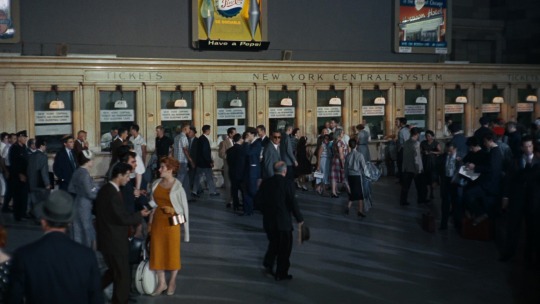

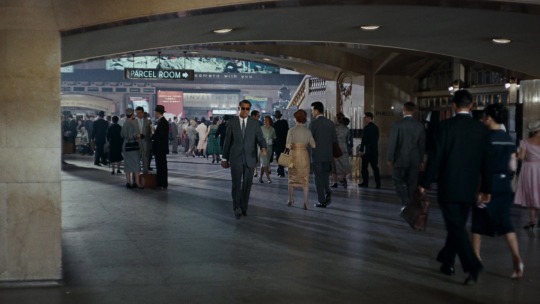
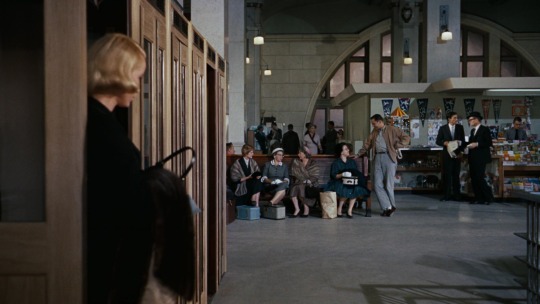

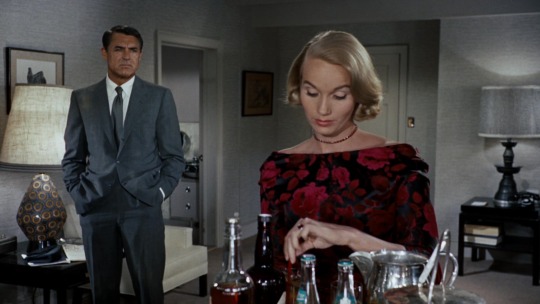







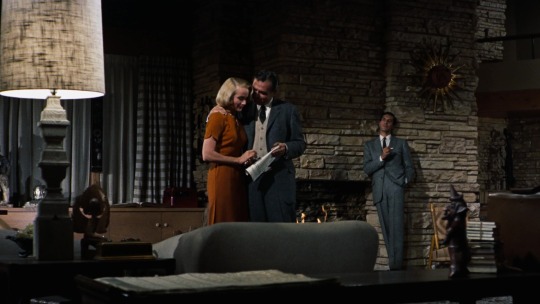

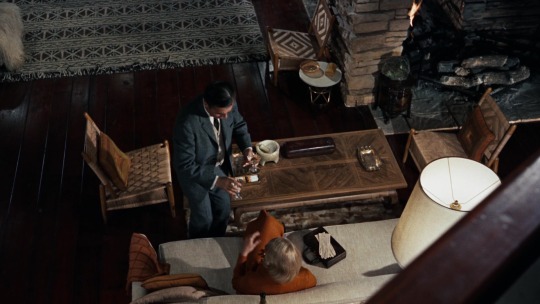



North by Northwest | 1959 | USA
Director: Alfred Hitchcock
Production designer: Robert F. Boyle / Set decorator: Henry Grace, Emile Kuri, Fred M. MacLean and Frank R. McKelvy
#north by northwest#cary grant#eva marie saint#alfred hitchcock#production design#set design#interior design#interior and films#architecture#films#film frames#cinema#cinematography#classicfilmsource#1950s movies#1950s
171 notes
·
View notes
Text
"Roma", el último triunfo del cine mexicano en los Óscar
Madrid, 24 feb (EFE).- Los tres Óscar logrados hoy por "Roma", de Alfonso Cuarón, se unen a las estatuillas conseguidas hasta ahora por profesionales del cine mexicano en la historia de unos premios que por primera vez celebraron el talento de sus vecinos en 1950 y que tenía a Anthony Quinn como su representante más galardonado. El actor nacido en Chihuahua se llevó dos Óscar a mejor secundario, por "Viva Zapata!" en 1953 y por "El loco del pelo rojo" en 1957 y era el mexicano más reconocido por Hollywood hasta la irrupción de los 'tres amigos', como se conoce a Cuarón, Alejandro González Iñárritu y Guillermo del Toro. Pero la relación de México con los Óscar había empezado mucho antes, concretamente en 1950 cuando Emile Kuri, un decorador mexicano de ascendencia libanesa se hizo con la estatuilla por su trabajo en la dirección de Producción de "La heredera", a la que seguiría una segunda en 1955 por "Twenty Thousand Leagues Under the Sea". Eran los años cincuenta, inscritos en la edad de oro del cine mexicano, aunque eso no se tradujo en nominaciones del país en el apartado de mejor filme en lengua no extranjera. La primera llegaría en 1961 con "Macario", de Roberto Gavaldón. Ni este filme ni otros siete que representaron a México en los Óscar -incluidos "Amores perros" y "Biutiful", de Iñárritu, y "El laberinto del fauno", de Del Toro- se llevaron el galardón. Ha tenido que ser el tercer amigo, Cuarón, el que por fin, al noveno intento, se haya llevado el Óscar para México, así como otros dos, a mejor director y mejor fotografía, los tres labores directas del cineasta. Antes ya había conseguido el de mejor director y mejor montaje (compartido con Mark Sanger) por "Gravity" en 2014. Una aventura espacial que marcó la nueva edad de oro de México, esta vez en Hollywood. Al año siguiene sería Iñárritu el triunfador. Su filme "Birdman" se llevó los Óscar a mejor película, dirección, guion -del propio director junto a Nicolás Giacobone, Alexander Dinelaris y Armando Bo- y Fotografía, para Emmanuel Lubezki. 'El chivo' Lubezki es uno de los colaboradores habituales de Iñárritu y Cuarón y con el trabajo en sus filmes ha conseguido tres Óscar, otro hito para el cine mexicano. En 2014 por "Gravity", en 2015 por "Birdman" y en 2016 por "El renacido". Esta última película continuó el reinado de los directores mexicanos, con Iñárritu recogiendo de nuevo el Óscar a mejor dirección. En 2017 el marcador mexicano se quedó en blanco en lo que se refiere a categorías tradicionales, pero ese año Iñárritu recogió un Óscar especial por su proyecto de realidad virtual "Carne y arena", una denuncia sobre la situación de los inmigrantes que cruzan ilegalmente la frontera entre México y Estados Unidos. Un problema sobre el que los tres se han pronunciado al recoger sus premios. "A quienes vienen aquí (a EE.UU.), ojalá sean tratados con la misma dignidad y respeto que aquellos que construyeron esta increíble nación de inmigrantes", dijo Iñárritu tras recibir el Óscar de dirección por "Birdman" de manos de Sean Penn, quien al anunciar su nombre, dijo sonriente: "¿"Quién le dio a este cabrón la tarjeta de residencia (green card)?". Dos años después, en 2018, sería Del Toro cuando recibió su Óscar por "La forma del agua" el que se referiría a los inmigrantes, con Trump ya en el poder. "Soy un inmigrante, como Alfonso, como Alejandro, como mis compadres y como muchos de vosotros", afirmó el de Guadalajara en una noche en la que su película fue la triunfadora con cuatro Óscar: mejor filme, mejor dirección, mejor música y mejor dirección de producción. Y este año Cuarón, que agradeció a la Academia de Hollywood que premiara un filme como "Roma", sobre una mujer indígena y trabajadora doméstica sin derechos laborales, un tipo de personas que, según el cineasta, ha sido "relegado" históricamente en el cine. Pero antes de esta época dorada, Del Toro estuvo a punto de triunfar con "El laberinto del fauno", en 2007. Estuvo nominado a mejor dirección, pero se tuvo que contentar con tres Óscar técnicos, dos de ellos para profesionales mexicanos: mejor fotografía para Guillermo Navarro, y dirección artística para Eugenio Caballero (compartido con la española Pilar Revuelta). En otra categoría técnica en la que también ha habido Óscar para México es en la de mejor sonido, gracias a Gonzalo Gavira, que formó parte del equipo ganador en 1974 por su trabajo en "El exorcista" -aunque no está incluido en el listado oficial de la Academia de Hollywood-. Y en 2003 la premiada fue la maquilladora Beatriz de Alba, por "Frida". Como curiosidad, en 1972 se produjo un doblete, único en la historia de los Óscar. Manuel Arango se llevó dos estatuillas por el cortometraje "Centinelas del silencio", que ganó en mejor corto y mejor corto documental. Y hay quien considera que el Óscar de Lupita Nyong'o, mejor actriz de reparto en 2014 por "12 años de esclavitud" pertenece a México, país en el que nació y de donde procede su nombre. Pero, aunque mantiene la doble nacionalidad, ha pasado casi toda su vida en Nigeria y Estados Unidos. Alicia García de Francisco Alfonso Cuaron winner of the Best Director Award, Best Achievement in Cinematography Award and Best Foreign Language Film Award for 'Roma' poses in the press room during the 91st annual Academy Awards ceremony at the Dolby Theatre in Hollywood. (Cine, Estados Unidos) EFE/EPA/ETIENNE LAURENT
#_revsp:efe.es#_uuid:ca99428f-a74f-3ce0-b630-0177ad708df6#_category:yct:001000076#_lmsid:a077000000Kgol7AAB
0 notes
Photo

Walt Disney had a small, private apartment constructed on the second floor of the Main Street Firehouse. From there, he enjoyed time with his family and worked in quiet. The apartment had a bathroom with a shower and a small kitchen. The furniture had a firehouse look, with many red and whites. Emil Kuri was the original decorator for the apartment, along with being set designer for many Disney films and being the decorator of Main Street.
Lillian Disney used the quiet patio often. She loved to drink afternoon tea or entertain her guests out on it. The patio had white wicker furniture and was very private, due to vines surrounding the wood patio. A light is kept on near the window, as a tribute to Walt Disney.
7 notes
·
View notes
Text
Muri Volleyball REG na UTB VC hitabaje iseti ya kamarampaka
Muri Volleyball REG na UTB VC hitabaje iseti ya kamarampaka
Muri Volleyball nyuma yo kunganya amaseti 2 kuri 2 amakipe yombi yitabaje iseti ya kamarampaka (Seoul) muri mukino wa REG na UTB VC
Umukino watangiye REG VC itsinda iseti ya mbere ku manota 25 kuri 21 ya UTB, amaseti abiri yakurikiyeho UTB VC yerekanye imbaraga zidasanzwe binyuze ku bakinnyi bayo bakomeye nka Ntagengwa Olivier, Nelson Murangwa na Karera Emile Dada, yaje gutsinda iseti ya kabiri…
View On WordPress
0 notes
Text
Muri Volleyball REG na UTB VC hitabaje iseti ya kamarampaka
Muri Volleyball REG na UTB VC hitabaje iseti ya kamarampaka
Muri Volleyball nyuma yo kunganya amaseti 2 kuri 2 amakipe yombi yitabaje iseti ya kamarampaka (Seoul) muri mukino wa REG na UTB VC
Umukino watangiye REG VC itsinda iseti ya mbere ku manota 25 kuri 21 ya UTB, amaseti abiri yakurikiyeho UTB VC yerekanye imbaraga zidasanzwe binyuze ku bakinnyi bayo bakomeye nka Ntagengwa Olivier, Nelson Murangwa na Karera Emile Dada, yaje gutsinda iseti ya kabiri…
View On WordPress
0 notes
Photo

NOTE: Pollyanna was the 2,000th feature-length or short-length film I rated on imdb as part of the, “My Movie Odyssey” tag on this blog. Movie #1,000 was Shane (1953) – a Western from a young boy’s point of view. Now, here is an iconic classic film from a young girl’s point of view.
Pollyanna (1960)
Following an animators’ strike and Bambi (1942) losing money at the box office due to the Second World War, Walt Disney would never be as involved in his studio’s animated features again. He had been harangued past his breaking point, and needed to shift his attention elsewhere. So after the innovative first five animated features, Disney concentrated on his studio’s nature documentaries, the construction of Disneyland, his anthology television show, and live-action films. Pollyanna, directed by Philip Kaufman and with an adapted screenplay by David Swift (based on Eleanor Porter’s novel of the same name), would become one of the most famous in that live-action Disney canon, even introducing the central character’s name into the English language – a “Pollyanna” is an excessively optimistic person. Family-friendly, yet divisive for its sugary optimism, it would be one of Walt Disney’s personal favorites among the live-action films he produced. Today, Pollyanna’s reputation – in part because the name is now a derisive shorthand – overshadows the fact that the film is moving in its goodness, in its belief that bitterness prevents one from a meaningful pursuit of happiness.
Twelve-year-old Pollyanna (Hayley Mills) is the daughter of deceased missionaries, who has come to live with her aunt Polly (Jane Wyman) in a small New England town. The affluent, austere, uncharitable Aunt Polly is an influential citizen – even going so far as to opposing the destruction and rebuilding of the local orphanage. Several citizens want Reverend Ford (Karl Malden) to use his Sunday sermons – usually blustering ordeals reminding of catastrophe and death – to support their orphanage plans. The reverend will initially refuse, fearful of Aunt Polly. As Pollyanna makes herself familiar with the maids at Aunt Polly’s home and befriends orphan Jimmy Bean (Kevin Corcoran), cantankerous hypochondriac Mrs. Snow (Agnes Moorehead), and town recluse Mr. Pendergast (Adolphe Menjou), she – through her actions – helps her new hometown to realize the walls of suspicion they have constructed against their friends and family and neighbors.
The world outside their well-kempt homes, their scenic wooden porches, and enormous frontyards might not be as threatening or suspicious as it might seem. Pollyanna’s optimism – embodied in the so-called “Glad Game” (stop rolling your eyes and keep reading), a psychological exercise to help Pollyanna remain cognizant of life’s beauty and others’ goodness when terrible things might occur – is contagious. How little Pollyanna knows what she means to so many townspeople in the film’s final minutes. By entrusting a town of misanthropes with her company, she has earned their respect, admiration, and affection. It takes a village to raise a child, so the proverb goes. In Pollyanna, the child has brought to the village companionship, solace.
English actress Hayley Mills, sixteen years of age during the film’s release, starred in her first of six Disney live-action movies with Pollyanna – a year removed from Mills’ double role in the original Parent Trap – and only her second film ever. The daughter of actor Sir John Mills (the father in 1960′s Swiss Family Robinson, another Disney live-action film), Hayley avoids the horrible trap of precociousness or self-consciousness that plagues the performances of child actors, no matter the decade, throughout Pollyanna. She even has the nerve to appear nervous on-screen. From her first scene stepping off the train to a place where she will not be a stranger for long, her character’s anxiety is never hidden. Those accusing Mills, who won the final Academy Juvenile Award ever presented for her work in Pollyanna, of simplistic, brainless cheerfulness are either being too harsh on child actors or are omitting certain scenes in their arguments. For blind optimism is not apparent in David Swift’s screenplay, nor in Mills’ acting. When Pollyanna is meeting Adolphe Menjou’s Mr. Pendergast for the first time, look at Hayley Mills’ face and how she seems a little smaller in this moment, Before the resolving scenes in the final minutes, notice how Mills interacts with Jane Wyman’s Aunt Polly – there is always an awkwardness there, an inability to be as warm with her as Pollyanna has with other townspeople. It is an accomplished feat of acting by the young Mills, as a performance any less genuine would derail the film.
That village I mentioned earlier? Well, an excellent ensemble performance from a packed cast does nothing but to make Pollyanna that more appealing. Jane Wyman must play against Hayley Mills’ optimism, yet keep the audience believing that Aunt Polly – delighting in keeping her neighbors in their place and enjoying Sunday reminders of God’s wrathful side – does care for Pollyanna as if she was her own daughter despite her best intentions an outward coldness. Yet Aunt Polly’s level of control of the town’s affairs is the source of so much of Pollyanna’s discomfort and inability to truly feel at home. For Karl Malden, Pollyanna utilizes some of Malden’s underrated comedic chops as he sermonizes with the fire and brimstone relished by Aunt Polly, dreaded by all other worshippers. In Malden’s scene with Mills as he is practicing for his upcoming Sunday’s sermon, there is a loving, an understanding between Pollyanna and Reverend Ford of a God that is not furious, but merciful. “Nobody owns a church,” Reverend Ford eventually realizes. Agnes Moorehead and Adolphe Menjou – the latter appears in his final theatrical film, and is provided scenes encouraging Pollyanna’s curiosity while doubling as a poignant send-off - are wonderful in their bit supporting parts.
Any attempt to understand and trust what might not be tangible or approachable – when it is almost always easier to be fearful and to anticipate rejection and resentment – underlies every minute of Pollyanna. How interesting that the film’s detractors ignore the fact Pollyanna, who has lost both her parents, is recovering from tragedy herself. Before coming into Aunt Polly’s life, Pollyanna has been provided the tools to help herself and others – these two qualities are interconnected; by helping others she helps herself, and vice versa. It is a way to process her loss, her unspoken pain. When Pollyanna, in the film’s darker final passages, is unable to say hello and keep her many friends company, her many friends arrive at Aunt Polly’s house to express their concern and love for one of their newest, beloved neighbors. Think of it like an It’s a Wonderful Life (1946) suitable for younger children. Walt Disney Studios, renowned among its fans for inspiring tears in moments of sadness, has infrequently moved audiences in scenes of goodness. Pollyanna is that rare Disney film that does so.
Surrounding the cast are beautiful, period-specific turn-of-the-twentieth-century details enabled by saturated colors and its art and production designers Carroll Clark, Robert Clatworthy, Emile Kuri, and Fred M. MacLean. Costume designer Walter Plunkett (1939′s Gone with the Wind, 1952′s Singin’ in the Rain) also contributes to that period detail, and veteran Disney matte artist extraordinaire Peter Ellenshaw has some of his most convincing work in Pollyanna (note the scenes where Pollyanna is looking outside her fourth-floor bedroom window and certain moments where the enormous tree outside Aunt Polly’s outside that leads into Pollyanna’s bedroom is featured). This more than compensates for some of the by-the-numbers camerawork and editing that too many live-action Disney movies from this time employed.
Dividing critics and barely making a profit at the box office, Walt Disney conceded that his studio failed to separate this film adaptation with the saccharine reputation assigned to Porter’s book. Disney – whose live-action films were, long before 1960, associated with family-friendly entertainment that few took seriously – had made a weepie, audiences and critics noted. But Disney, in this financial failure, had just released one of the best live-action films he would ever produce. Biographer Neal Gabler notes that Disney, watching the final cut for the first time, teared up, and rejected screenwriter David Swift’s suggestion to cut the film by twenty minutes (Pollyanna is overlong, but won’t feel that way to those who become invested in it). The studio and Disney himself might not have received the instant gratification of ticket sales and critical praise, but subsequent television airings and robust home video releases has allowed for reevaluation.
Pollyanna made an instant star out of Hayley Mills and is now proudly part of Walt Disney Studios’ live-action filmography. The film, like too many other live-action films produced as Disney was still alive, has been collecting dust within the Disney Vault. The recent high-definition remastering for a Blu-ray era appears to have been rushed, as the colors in this HD remaster appear to have been drained, and lighter colors appear whiter than they should. Perhaps this is indicative of a throwaway mentality that has seeped into Walt Disney Studios – often cited as an exemplar for film preservation (at least, for its animated works). Too few younger movie watchers are aware of Walt Disney’s history of live-action excellence in the 1950s and 60s. That history continued with Pollyanna – a film assuming the best of others, familiar and otherwise.
My rating: 7.5/10
^ Based on my personal imdb rating. Half-points are always rounded down. My interpretation of that ratings system can be found here.
#Pollyanna#Philip Kaufman#Walt Disney#Hayley Mills#Jane Wyman#Karl Malden#Richard Egan#Kevin Corcoran#Adolphe Menjou#Agnes Moorehead#Reta Shaw#Mary Grace Canfield#Donald Crisp#Eleanor Porter#David Swift#Walter Plunkett#Peter Ellenshaw#TCM#My Movie Odyssey
0 notes
Text
“December” Activity Check
This link displays the list of muses that did not check in by 1/8 and are now considered inactive and dropped. The list is also available below.
Ace Attorney
Dick Gumshoe - {Bears}
Nahyuta Sahdmadhi - {Emil}
Phoenix Wright - {Emil}
Assassin’s Creed
Altair Ibn La'Ahad - {Wingz}
Ratonhnhaké:ton - {Craig}
Boku no Hero Academia
Fumikage Tokoyami - {Wingz}
Cowboy Bebop
Spike Spiegel - {Photon}
Criminal Minds
Spencer Reid - {Kira}
Elsword
Raven Cronwell (Blade Master) - {Acel}
Ensemble Stars
Ritsu Sakuma - {Hana}
Free
Momotarou Mikoshiba - {Kaze}
Rin Matsuoka - {Sharkie}
Sousuke Yamazaki - {Lottie}
Final Fantasy
Gladiolus Amicita - {Acel}
Lunafreya Nox Fleuret - {Rose}
Nine - {Rose}
Haikyuu!
Ushijima Wakatoshi - {Ashley}
Homestuck
Eridan Ampora - {Ink}
Sollux Captor - {Herm}
I Don’t Want This Kind of Hero
Orca - {Kendal}
Sasa - {Kendal}
Inazuma Eleven GO!
Koizaki Io - {Kuri}
JoJo’s Bizarre Adventure
Dio Brando - {Rina}
Legend of Zelda
Link - {Goat}
Lifeline
Arika Lanphear - {Ivy}
Love Live!
Nozomi Tojo - {Lottie}
Marvel
Pietro Maximoff - {Shepherd}
Miraculous Ladybug
Chat Noir - {Shepherd}
Mob Psycho 100
Teruki Hanazawa - {Koh}
Mystic Messenger
Hyun Ryu (ZEN) - {Kaze}
Off
The Batter - {Devon}
Original Characters
Vivia - {Vapid}
Overwatch
Ana Amari - {Ashley}
Owari no Seraph
Yoichi Saotome - {Eri}
Percy Jackson and the Olympians
Nico DiAngelo - {Goat}
Pokemon
Sun - {Emil}
Saint Seiya
Shura (Capricorn) - {Kuri}
Scott Pilgrim
Ramona Flowers - {Ink}
Star Fox
Wolf O'Donnell - {Apollo}
Star Wars
Han Solo - {Nic}
Tiger & Bunny
Kotetsu T. Kaburagi - {Bears}
Undertale
Mettaton - {Ink}
Sans - {Quick}
Vocaloid
Daina - {Kaide}
Voltron: Legendary Defender
Takashi Shirogane - {Lottie}
Warriors
Jayfeather - {Wingz}
Welcome to Night Vale
Cecil Gerswhin Palmer - {Wingz}
Yuri!!! On Ice
Yuri Plisetsky - {Emil}
0 notes
Text
El primer Oscar para un mexicano
El primer Oscar para un mexicano
En estos momentos, tras de los premios que se llevara Guillermo del Toro en estas pasadas entregas del Óscar, la presencia del mexicano en el cine de los Estados Unidos es el tema favorito de todo mundo. Sin embargo, nuestro país tiene un amplio recorrido dentro de la carrera de las estatuillas, arrancando desde 1949, en que veríamos al primer connacional dentro de las mismas. El día de hoy…
View On WordPress
0 notes
Text
Lake Buena Vista Community
Lake Buena Vista Community
Lake Buena Vista Community The Lake Buena Vista community is more than just the host community for Walt Disney World; it was also going to be central to the ultimate vision that Walt Disney had for the planned community of EPCOT. Well, not really Walt’s vision, but easiest way the company leaders could figure it out, post-Walt. As we jump back in time, imagine the entire area we’re looking at is…
View On WordPress
#Club Suites#Emile Kuri#Fairway Villas#Lake Buena Vista#Lake Buena Vista Community#Lake Buena Vista Vacation Villas#Theme Parkeology#Treehouse Villas#Vacation Villas
0 notes